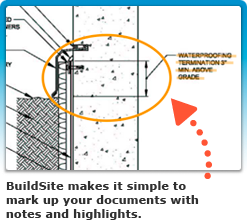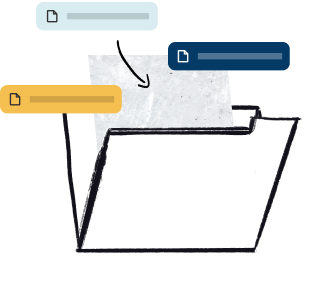Abstract
This specification covers the materials and the test methods for use in chemical admixtures to be added to hydraulic-cement concrete mixtures in the field. The seven types of admixtures are indicated as follows: Type A—water reducing; Type B—retarding; Type C—accelerating; Type D—water reducing and retarding; Type E—water reducing and accelerating; Type F—water reducing, high range; and Type G—water reducing, high range, and retarding. The materials used in the concrete mixtures shall include Type I or Type II cement, pozzolan, fine and coarse aggregates, and air-entraining admixture. Samples of freshly mixed concrete from at least three separate batches for each condition of concrete shall be tested in accordance with the slump, air content, time of setting, and water content tests. Physical properties retesting shall consist of uniformity and equivalence tests using infrared analysis which is intended to compare qualitatively the composition of different samples, residue by oven drying which shall be either a forced circulation type or one with provision for free access of air, and specific gravity determination using hydrometers. Test specimens of the hardened concrete shall be prepared in accordance to compressive strength, flexural strength, resistance to freezing and thawing, and length change.
This abstract is a brief summary of the referenced standard. It is informational only and not an official part of the standard; the full text of the standard itself must be referred to for its use and application. ASTM does not give any warranty express or implied or make any representation that the contents of this abstract are accurate, complete or up to date.
1. Scope
1.1 This specification covers materials for use as chemical admixtures to be added to hydraulic-cement concrete mixtures in the field for the purpose or purposes indicated for the eight types as follows:
1.1.1 Type A—Water-reducing admixtures,
1.1.2 Type B—Retarding admixtures,
1.1.3 Type C—Accelerating admixtures,
1.1.4 Type D—Water-reducing and retarding admixtures,
1.1.5 Type E—Water-reducing and accelerating admixtures,
1.1.6 Type F—Water-reducing, high range admixtures,
1.1.7 Type G—Water-reducing, high range, and retarding admixtures, and
1.1.8 Type S—Specific performance admixtures.
1.2 This specification stipulates tests of an admixture with suitable concreting materials as described in 11.1-11.3 or with cement, pozzolan, aggregates, and an air-entraining admixture proposed for specific work (11.4). Unless specified otherwise by the purchaser, the tests shall be made using concreting materials as described in 11.1-11.3.
Note 1—
It is recommended that, whenever practicable, tests be made using the cement, pozzolan, aggregates, air-entraining admixture, and the mixture proportions, batching sequence, and other physical conditions proposed for the specific work (11.4) because the specific effects produced by chemical admixtures may vary with the properties and proportions of the other ingredients of the concrete. For instance, Types F and G admixtures may exhibit much higher water reduction in concrete mixtures having higher cement factors than that listed in 12.1.1. Mixtures having a high range water reduction generally display a higher rate of slump loss. When high-range admixtures are used to impart increased workability (6 to 8-in. slump [150 to 200–mm]), the effect may be of limited duration, reverting to the original slump in 30 to 60 min depending on factors normally affecting rate of slump loss. The use of chemical admixtures to produce high-slump (flowing) concrete is covered by Specification C1017/C1017M. Note 2—
The purchaser should ensure that the admixture supplied for use in the work is equivalent in composition to the admixture subjected to test under this specification (see Section 6, Uniformity and Equivalence). Note 3—
Admixtures that contain relatively large amounts of chloride may accelerate corrosion of prestressing steel. Compliance with the requirements of this specification does not constitute assurance of acceptability of the admixture for use in prestressed concrete. 1.3 This specification provides for three levels of testing.
1.3.1 Level 1—During the initial approval stage, proof of compliance with the performance requirements defined in Table 1 demonstrates that the admixture meets the requirements of this specification. Admixtures (except for Types B, C, E, and S) shall qualify for provisional compliance when the physical requirements and any of the alternative compressive strength requirements in Table 1 are met. If subsequent test results at 6 months or one year fail to meet the standard requirement of 100 % of reference strength, the compliance of the admixture to this standard is withdrawn and all users of the admixture shall be notified immediately. Uniformity and equivalence tests of Section 6 shall be carried out to provide results against which later comparisons can be made (See Note 4).
Note 4—
Allowing for provisional compliance while retaining longer term compressive strength requirements promotes more rapid qualification of new materials, but also provides assurance that new admixture technologies will not exhibit unexpected longer term performance. The alternative compressive strength requirements in Table 1 are based on statistical analysis of 103 Specification C494/C494M evaluation tests. The alternative requirements correspond to a 99 % probability of passing subsequent test age requirements.2 1.3.2 Level 2—Limited retesting is described in 5.2, 5.2.1 and 5.2.2. Proof of compliance with the requirements of Table 1 demonstrates continued conformity of the admixture with the requirements of the specification.
1.3.3 Level 3—For acceptance of a lot or for measuring uniformity within or between lots, when specified by the purchaser, the uniformity and equivalence tests of Section 6 shall be used.
1.4 The values stated in either SI units or inch-pound units are to be regarded separately as standard. The values stated in each system may not be exact equivalents; therefore, each system shall be used independently of the other. Combining values from the two systems may result in non-conformance with the standard.
1.5 The text of this standard references notes and footnotes which provide explanatory material. These notes and footnotes (excluding those in tables and figures) shall not be considered as requirements of the standard.
1.6 The following precautionary caveat pertains only to the test method sections, Sections 11-18 of this Specification: This standard does not purport to address all of the safety concerns, if any, associated with its use. It is the responsibility of the user of this standard to establish appropriate safety and health practices and determine the applicability of regulatory limitations prior to use.
Reproduced, with permission, from the ASTM International website, copyright ASTM International, 100 Barr Harbor Drive, West Conshohocken, PA 19428. To purchase the complete standard, go to http://www.astm.org/.



